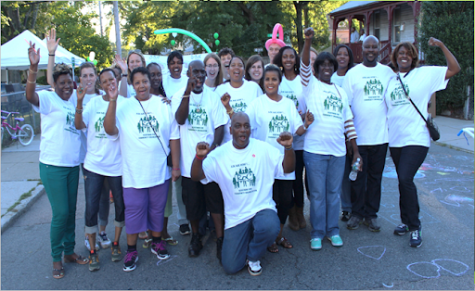Community Redlining
November 13, 2020
Systemic racism exists in America, whether you understand it or not. According to the Webster Dictionary, it is “a form of racism that is embedded as normal practice within society or an organization.” Throughout American history, systemic racism has been embedded within every institution and facet of American life, especially housing. The effects of the twentieth-century practice of redlining continue to impact minorities’ lives, wealth, and well-being today.
To help Americans get affordable housing after the Great Depression, the Federal Housing Administration (FHA) decided to give mortgages and loans to home-buyers and homeowners for financial relief. The money given was based off of maps called “residential security maps.” These maps graded communities and neighborhoods based off of their “risk,” which was really the amount of minorities in the neighborhood. This means that minorities were given less money for aid, and their property lost value. This created the foundations for a nationwide wealth gap by race.
Technically, this practice was banned in 1917 by the Supreme Court, but lawmakers and real estate agencies found ways around the laws. White members of neighborhoods even created racial covenants, which meant that homeowners would agree not to sell to minority buyers. By the time racial covenants were banned in 1947, the practice was far too widespread to reverse or fix. For example, over 80% of neighborhoods in Los Angeles and Chicago were racially segregated due to racial covenants.
With the passing of the Fair Housing act in 1968, people would like to think that the effects of redlining are no more. Unfortunately, this is simply not the case. According to the Washington Post, 3 out of 4 communities redlined 80 years ago are still struggling economically today. These neighborhoods have less job opportunities, poor public transportation, more vacant buildings, and fewer services like healthcare, banking, and shopping. In addition, Black families have lost a total of over $212,000 in personal wealth in the past 40 years because their homes were redlined, according to real estate app Redfin.
So, what can be done to help repair damages? Unfortunately, not much, aside from the government giving aid and financial assistance to these damaged neighborhoods. The best thing we as people can do is raise awareness to these issues to bring support to stopping systemic racism as a whole. Unfortunately, not enough people in our community are aware issues like this ever existed. When asked about his knowledge of community redlining, UMass Lowell student Conrad Jankowski responded, “Not that much, honestly,” and after a brief pause he recalled, “Maybe watching a video about it Freshman year.” The only thing the student could recall was that “it was about real estate and houses.”
Conrad is not alone in his limited knowledge of redlining. As a community, many people do not know of redlining and other racist policies throughout American history. That is why it is so important to spread awareness and knowledge from the past and to educate each other. It is going to take all of us to stop any traces of systemic racism that still exist in America, and the first step is to acknowledge and share this information. Together as a people, we can come together to stop systemic racism by relieving its symptoms with government aid and rooting out its sources with community awareness. 
